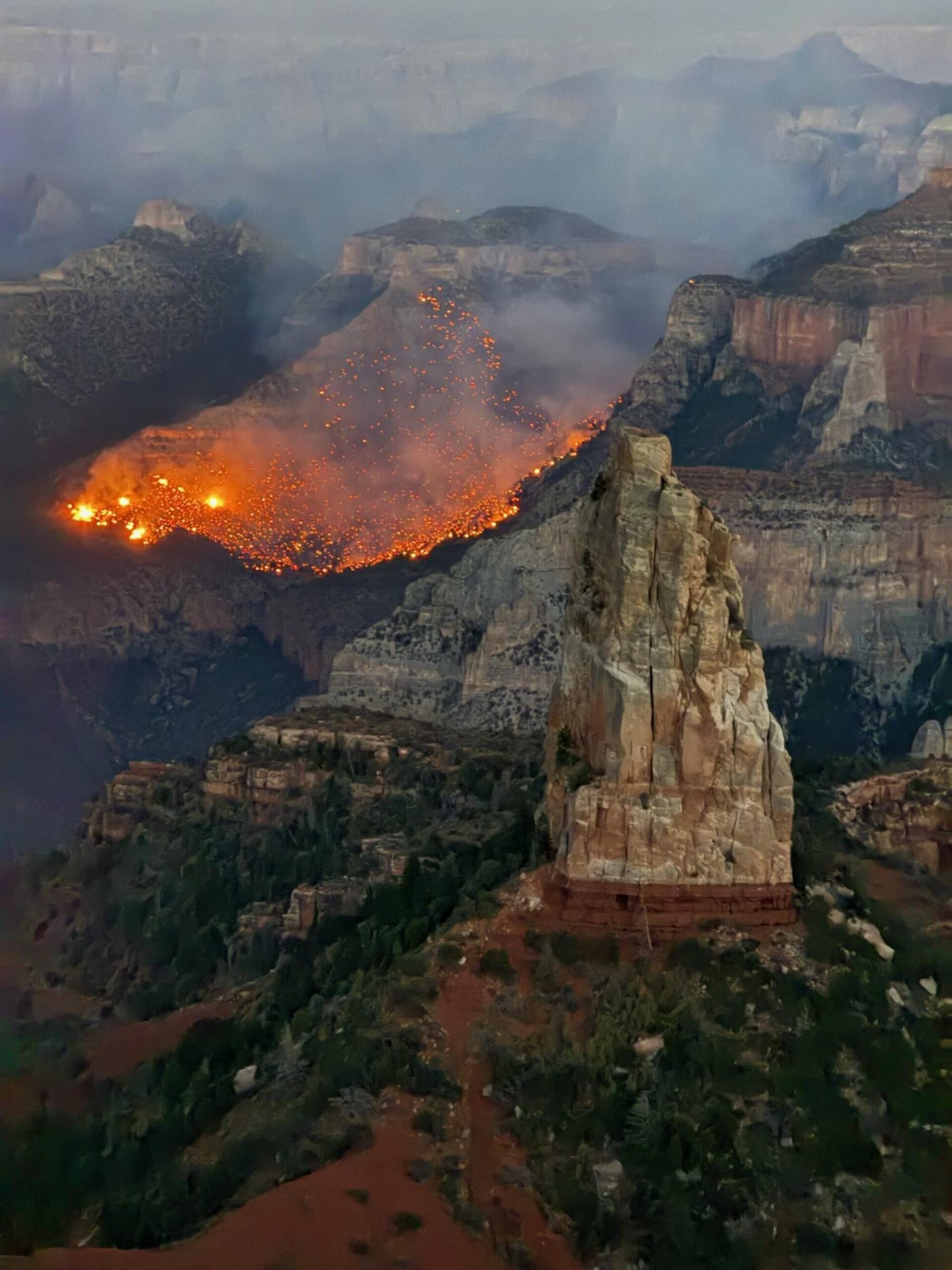A small fire ignited by lightning on the North Rim of the Grand Canyon escalated into a massive wildfire, known as the Dragon Bravo Fire, devastating over 145,000 acres as of July 15, 2023. Initially treated as a controlled burn, park officials faced severe scrutiny once the fire exploded beyond containment. This incident raises critical questions about fire management practices in a region increasingly vulnerable to climate change.
In June 2023, the fire began as a modest 120-acre blaze, with the National Park Service opting to allow it to burn, adhering to modern fire management strategies. This approach is based on the understanding that fire can play a beneficial role in forest health by clearing out dry fuels and promoting new growth. The park service assured the public that there was “no threat to public safety” and confidently stated that the fire was being managed under a “confine and contain strategy.”
The situation dramatically changed on July 11, when wind conditions shifted, causing the fire to breach containment lines. A park employee described the chaos of that day, stating, “By 9 p.m., there was nothing we could do. Embers were raining down everywhere and everything that could burn was burning.” The fire’s rapid spread resulted in significant damage, including the destruction of 70 buildings, such as the historic Grand Canyon Lodge, completed in 1928.
Political Fallout and Public Concerns
The sudden escalation of the Dragon Bravo Fire has prompted an outcry from Arizona’s political leaders. Both of the state’s Democratic senators, along with Governor Katie Hobbs, have called for investigations into the decision-making process that led to the fire being allowed to grow. Governor Hobbs remarked on social media that the public “deserves answers for how this fire was allowed to decimate the Grand Canyon National Park.”
Len Nielson, staff chief in charge of prescribed burns for the California Department of Forestry and Fire Protection, emphasized that while it is essential to learn from this incident, it is important not to abandon the concept of “good fire.” He stated, “Let’s not throw the baby out with the bathwater,” highlighting the ongoing struggle to balance ecological benefits with public safety.
The logic behind controlled burns is rooted in the history of fire in the American West, where natural fires have historically helped maintain healthy ecosystems. Before suppression efforts became the norm, landscapes routinely burned every decade, reducing the fuel load and keeping fires manageable. The challenge now lies in convincing both public officials and landowners of the benefits of allowing fires to burn under controlled conditions.
Investigation and Future Implications
Investigations into the cause of the Dragon Bravo Fire’s rapid expansion are underway, focusing on whether a miscalculation or unforeseen weather changes contributed to its escape. Timothy Ingalsbee, executive director of the nonprofit Firefighters United for Safety, Ethics, and Ecology, noted that recent cuts to federal firefighting resources may have hindered the ability to predict and manage such fires effectively. The National Weather Service had provided only light wind forecasts prior to the fire’s escalation, raising questions about the adequacy of available resources.
The effects of climate change on fire behavior are increasingly evident. Arizona has faced severe drought conditions, with the period from July 2020 to June 2025 recorded as the fifth-warmest and fourth-driest on record. This has resulted in a landscape that is particularly susceptible to wildfires.
Stephen Pyne, an environmental historian at Arizona State University, expressed concern over the implications of the Dragon Bravo incident for future fire management policies. He cautioned against using this fire as a reason to undermine progressive fire management strategies, stating, “Was letting this fire burn within the range of acceptable risks? That seems like a very legitimate line of inquiry.”
As the investigations continue, the lessons learned from the Dragon Bravo Fire could shape the future of fire management not only in Arizona but across the nation, highlighting the delicate balance between ecological health and public safety in an era of increasing wildfire threats.
